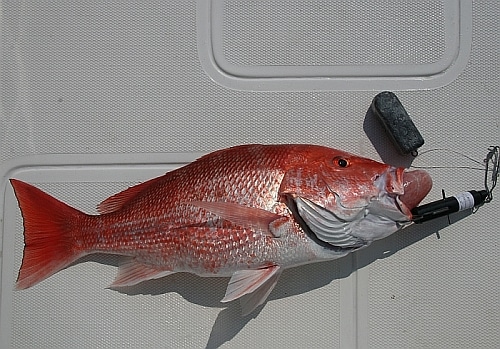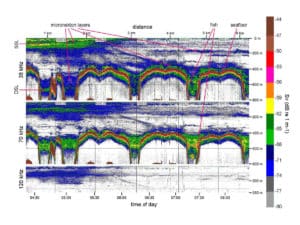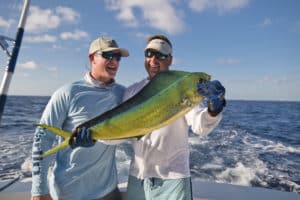
red snapper showing barotrauma
Based on the available science, it should be legal for anglers to use “rapid-descent devices” to release deepwater fish rather than have to rely solely on venting.
That’s a conclusion reached at a recent two-and-one-half-day barotrauma workshop in Saint Petersburg, Florida, by 55 fisheries researchers, managers and others.
Barotrauma is the technical term for a deepwater fish “blowing up” as an angler reels it to the surface, a debilitating condition caused when the slight amount of gas normally in a fish’s swim bladder to keep it neutrally bouyant expands dramatically and suddenly, filling the gut cavity and forcing the fish’s inverted stomach out its mouth.
Barotrauma is a huge factor in the management of fish that anglers commonly catch below 100 or so feet — such as red snapper. It’s also a huge problem with no easy solution. Hence the workshop.
If an angler, required by law to release a fish in this condition, simply removes the hook and releases it, the fish will float away at the surface, unable to swim down. For such “releases,” mortality is nearly 100 percent.
Two means of dealing with this are venting and using drop weights or other devices designed to pull an inflated fish down quickly. Empirical and anecdotal evidence suggest fish need not be returned all the way to bottom; if lowered just 50 to 150 feet, recompression will generally be sufficient for them to swim quickly back to the safety of the bottom.
Venting requires anglers to bring a fish aboard, hold it still while inserting a venting tool (large hypodermic needle) into its abdomen at just the right area and angle, release (squeeze out) trapped gases, then return the fish to the water and hope it swims down (and stays down). The method is fraught with fallibility — holding a fish down in a pitching sea and trying to find the small sweet spot for a needle are tough, especially for non-biologists. Beyond immediate risks of poking holes directly into abdominal cavities, that also leaves a site for infection.
Venting is required of anglers in the Gulf of Mexico. Rapid-descent devices are not required — and in fact are illegal.
Why?
Very good question.
I asked this of the Gulf of Mexico Fishery Management Council years ago, when even at that time, there seemed to be more than enough writing on enough walls to make it obvious that drop weights should at the least be legal in the Gulf.
Now, an august panel is suggesting that the Gulf council “should be encouraged to … add an allowance for anglers to use rapid-descent devices in lieu of venting.”
That’s not to say I told you so. Well, okay, maybe it is, a little. But more to the point, it’s to suggest that this concern has been made to the Gulf council for some years. Perhaps now, with 55 voices joining mine and others along the way, and with mounting evidence in favor of venting alternatives, council members will give anglers — and the deepwater fish they release by law and/or by choice — a long-needed break.
(You can read much more about this issue at FishSmart, including the reality that NO method for releasing fish in deep water is likely to be very reliable. Barotrauma remains a major problem. And it’s terribly complicated. For example, water temperature is a major factor in the survival of these fish. Ditto for predation on released fish by sharks, barracuda, porpoises and other predators. You can also read of several commendable suggestions for further research made by workshop participants, important in ongoing efforts to reduce the release mortality of deepwater fish.)






